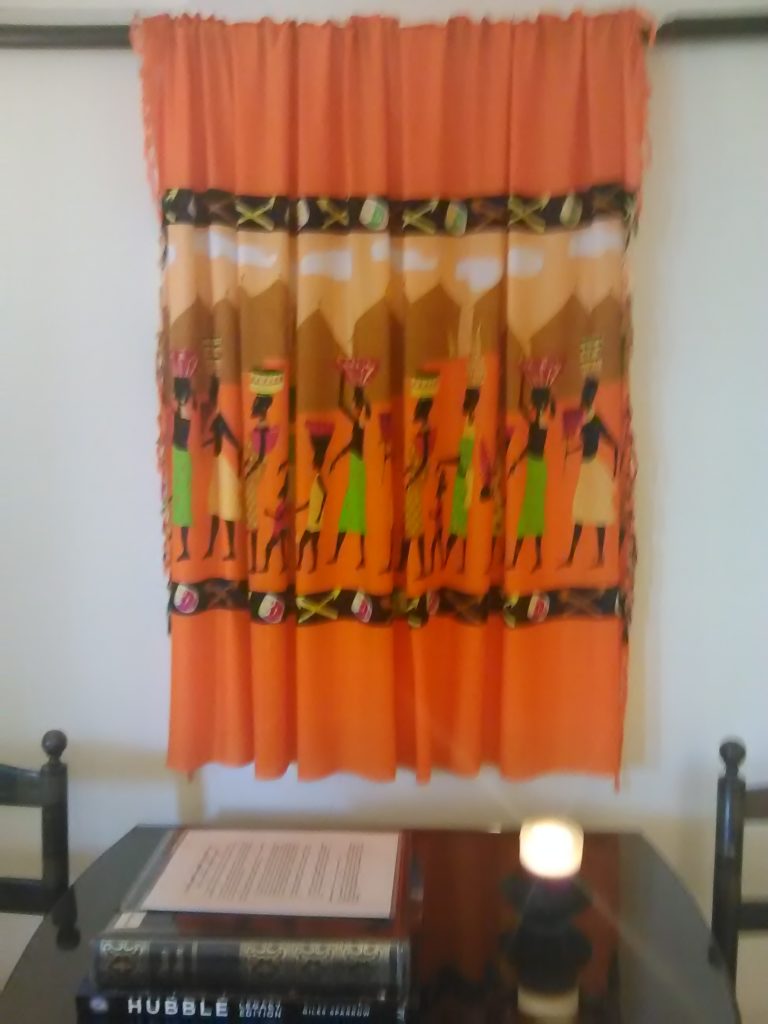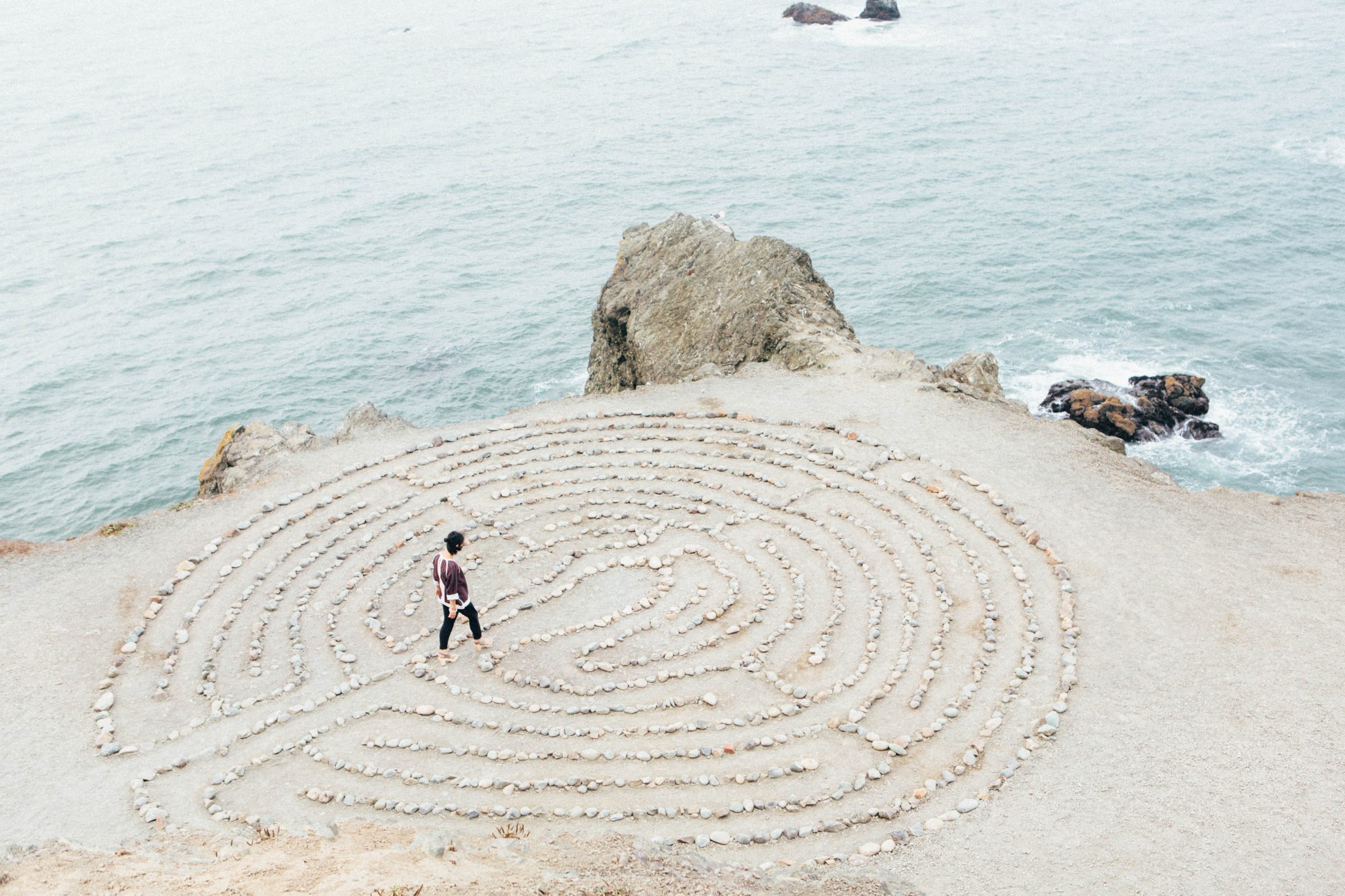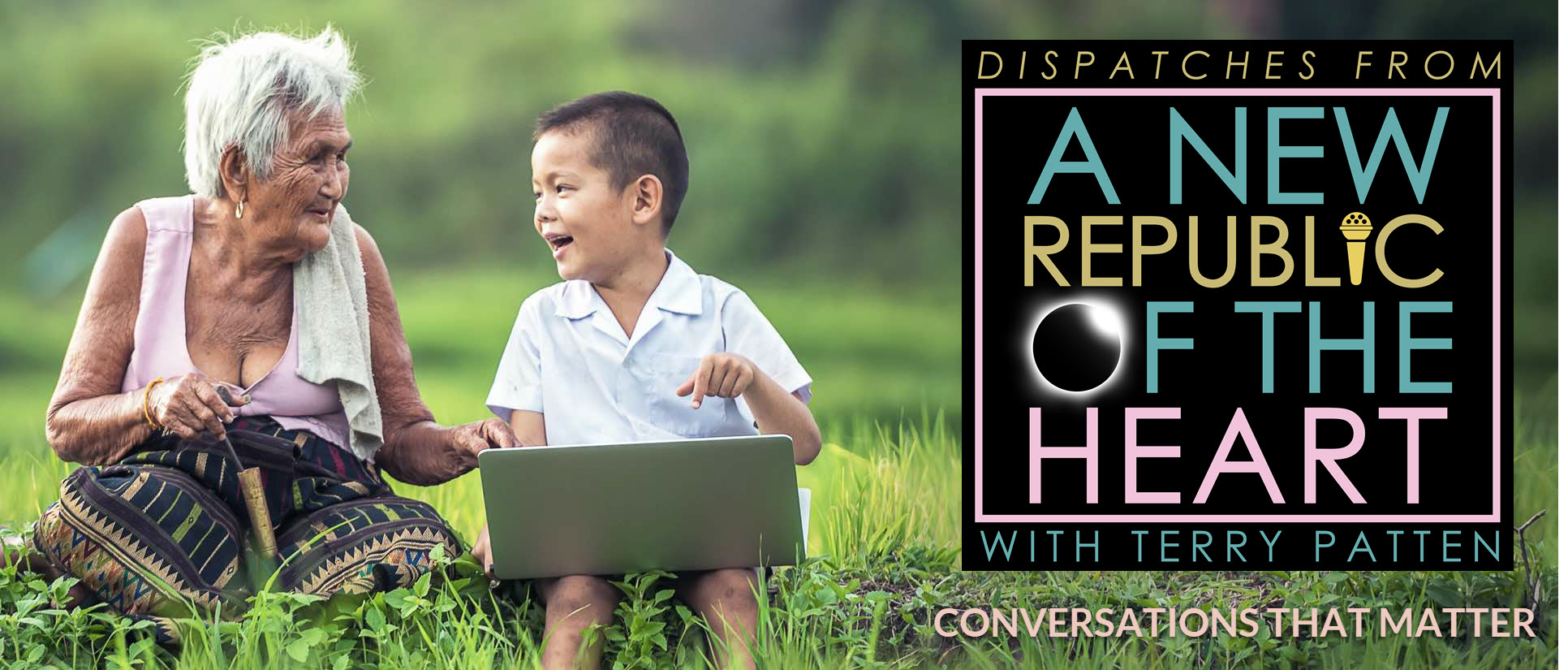On the afternoon of Memorial Day, May 25, 2020, I sat down at my sewing machine to make a wall hanging from a piece of cotton fabric I bought last fall at an international bazaar. At the time I did not know how the death of George Floyd, in Minneapolis that same day, would relate to what I was doing. Nor did I have any inkling of the interior reckoning I was about to undergo.
Much of my adult life was spent working in other countries. On the occasions when I was back in the US, I thought that if I were not working overseas, I would want to be engaged in the Civil Rights struggle at home. However in those years, my focus was definitely overseas, and I never considered what I would actually do or how I would be in the work for racial justice in the US. Certainly, my exposure to African Americans was limited; nevertheless, I was completely opposed to the oppression they so obviously lived. From the periphery, I cheered on every indication of apparent progress in their social and political journey. It is only in recent years that I began to suspect that I, Ann Marie Braudis, bear responsibility for their oppression. At first, I did not examine this insight too carefully. However over time, it occurred to me that there were several things I could do to better understand what I was sensing. I decided to:
- Visit the new National Museum of African American History, in Washington DC.
- Go to the birthplace of Martin Luther King, Jr, and the Ebenezer Baptist Church, in Atlanta, Georgia
- Remember Bloody Sunday in 1965, by walking over the Edmund Pettus Bridge, near Selma, Alabama
I enlisted the help of friends and relatives to execute my plan. I would make my first trip in the fall of 2019 and continue in the spring of 2020.
A good friend and I made the trip to DC in November; she principally to visit friends and I to visit the African American Museum. While the entire trip was wonderful, the visit to the museum was profound. I felt deeply grateful for it and for the warm companionship of my friend, who accompanied me to the museum.
One could not help but be impacted by the extensive exhibits touching on every aspect of Black life in America, starting with the forced rupture from life in Africa and the ordeal of crossing the sea in terrifying and degrading circumstances. I felt shame. I also felt admiration for all that African Americans have overcome and, in turn, contributed to America and to the world, particularly in the fields of spirituality, science, music, dance, entertainment and sports.
In terms of taking responsibility for the oppression of African Americans, I did not gain clarity in an academic sense by going on this trip, but I knew that it was right to make this effort, to have this experience.
After this venture, the novel virus started and my plan to go to Georgia and Alabama in the spring had to be postponed.
Meanwhile, I bought the fabric mentioned above, which is from Tanzania, in Africa, and depicts a scene of women and children walking one behind the other balancing baskets and jugs on their heads. It appealed to me for several reasons; the colors are gorgeous, the scene is ordinary and exotic, and I like simple art and crafts from faraway places. Also, it relates to my current interest in Americans of African heritage. I looked forward to making a wall hanging from the fabric for my living room for the summer months.
It was late on Memorial Day when I finally got started on my project of transforming the fabric into a wall hanging. I had a strong sense of presence to the sacred and decided to make my work a ritual, symbolic of inner transformation. I opened my ritual by lighting a candle inviting light into my mind, soul, and body. The central act of the ritual was consciously transforming the fabric into something new and beautiful, which included measuring, cutting, pinning, lining, ironing, and sewing. After many hours of work, I concluded my ritual by hanging the transformed fabric on the wall. It seemed exactly right! Already it was late in the evening and I decided to wait until the next day to decide which complementary objects I would place on the table beneath the wall hanging. It was approximately the time of George Floyd’s cruel death while in police custody, which I learned of the following day.
The three weeks that have since passed seem like one endless nightmare highlighting the ongoing ruthless and crushing treatment of African Americans.
At the same time, I have a great sense of relief that the marches, demonstrations and prayer vigils that have been transpiring all over the country in response to the death of George Floyd seem to be spontaneously inclusive of people of all races. This feels like a civilizational shift and reminds me of my experience at the African American Museum where I was amazed at the great crowd of people, from every state, from all over the world and of every racial variation. At the time, this mix of humanity, all touched by the same pain and desirous of a better future, struck a chord that vibrated strongly within me.
Nevertheless, I am aware of the hard work that lies ahead by way of enshrining in American law and policy the rights of all people. However, I am encouraged and hopeful that things can change. I think that for white Americans change has to be rooted in personal grappling with uncomfortable realizations. For me, the hardest has been realizing that my personal sense of security and my moral assumptions are tied to religious beliefs. When I was a child, my Aunt May, the matriarch of our family and a deeply religious person, often said, I thank God every day that I was born white. In me this simply led to the unquestioned conclusion that to be white is to be blessed, favored by God.
These past weeks have offered me the opportunity of looking at the way this thread has played out in my life and what I need to do now. I have reached the following conclusions:
- I need to detach myself from the lifelong, undisturbed sense of whiteness being a blessing.
- I cannot help but look at my trip to DC and my other planned trips as expressions of privilege. I will eventually go to Georgia and Alabama; however, I am at least slightly changed, aware that to want to have an experience that will help me to understand another’s grief and ongoing bondage stems from personal privilege.
- The inner framing of my personal narrative will have to change.
- This is soul work. I hope and pray that by engaging it, my perceptions will begin to change and that I will know how to harmonize my actions with my perceptions.
- I will join and actively participate in the organization Repairers of the Breach, led by Dr. William Barber
Terry Patten’s book A New Republic of the Heart has a line that I love, and which has many applications. I quote it here in an aspirational sense.
“When we stand for something wholeheartedly, our whole way of being becomes congruent with it, and we actually do enact it.” (p.154)
Finally, I found a black and white candle for the table under the wall hanging.
Beside the candle I placed my treasured book with photos from the Hubble telescope, as this seems to hold the mystery and the beauty of the evolutionary journey of all of us.
I added my photo album recounting my personal story.
Ritually, I have added the Higher Ground Moral Declaration, by Dr. William Barber. This is an intelligent and integral plan for emerging from our present darkness into a new and brighter time. Transformed!



